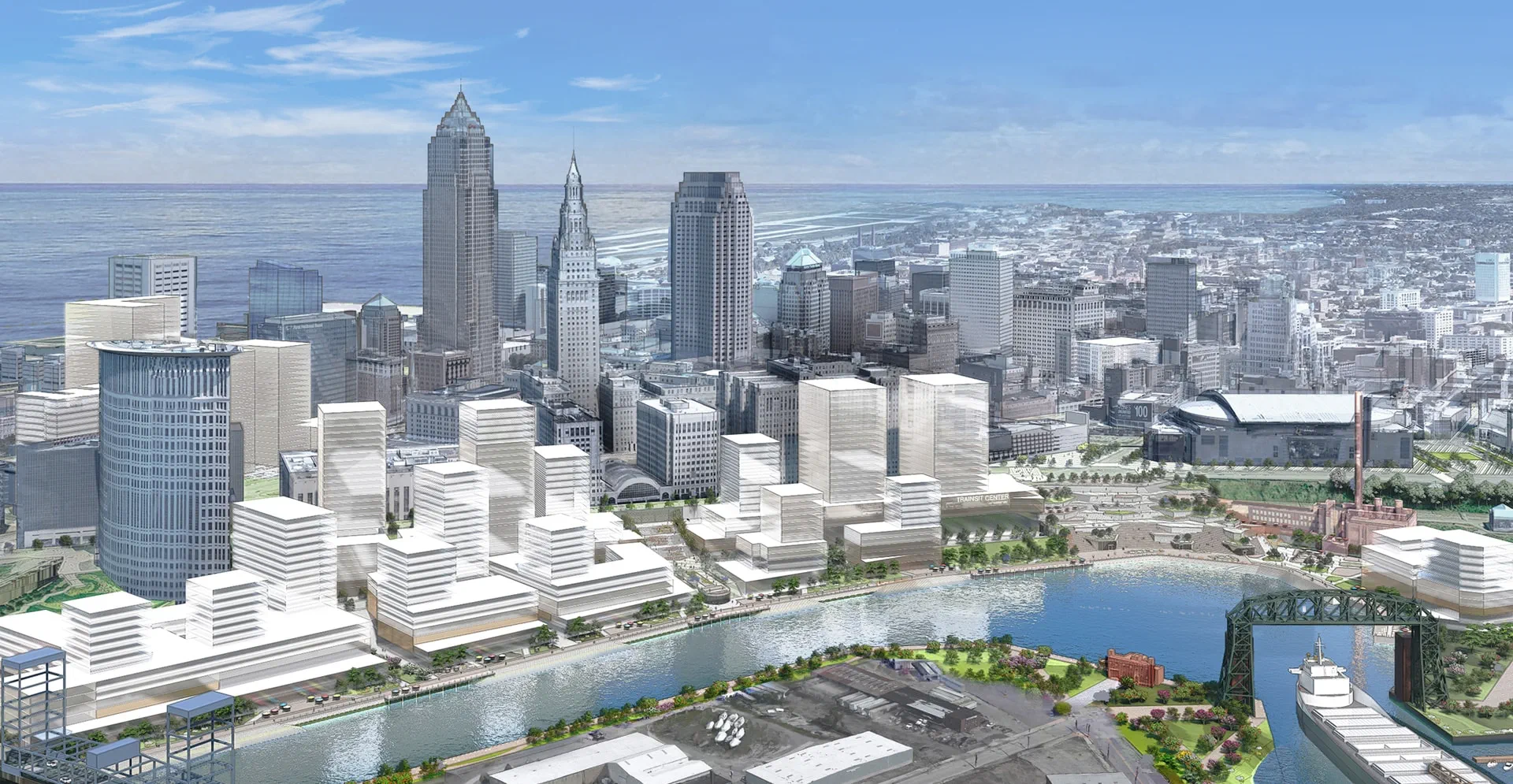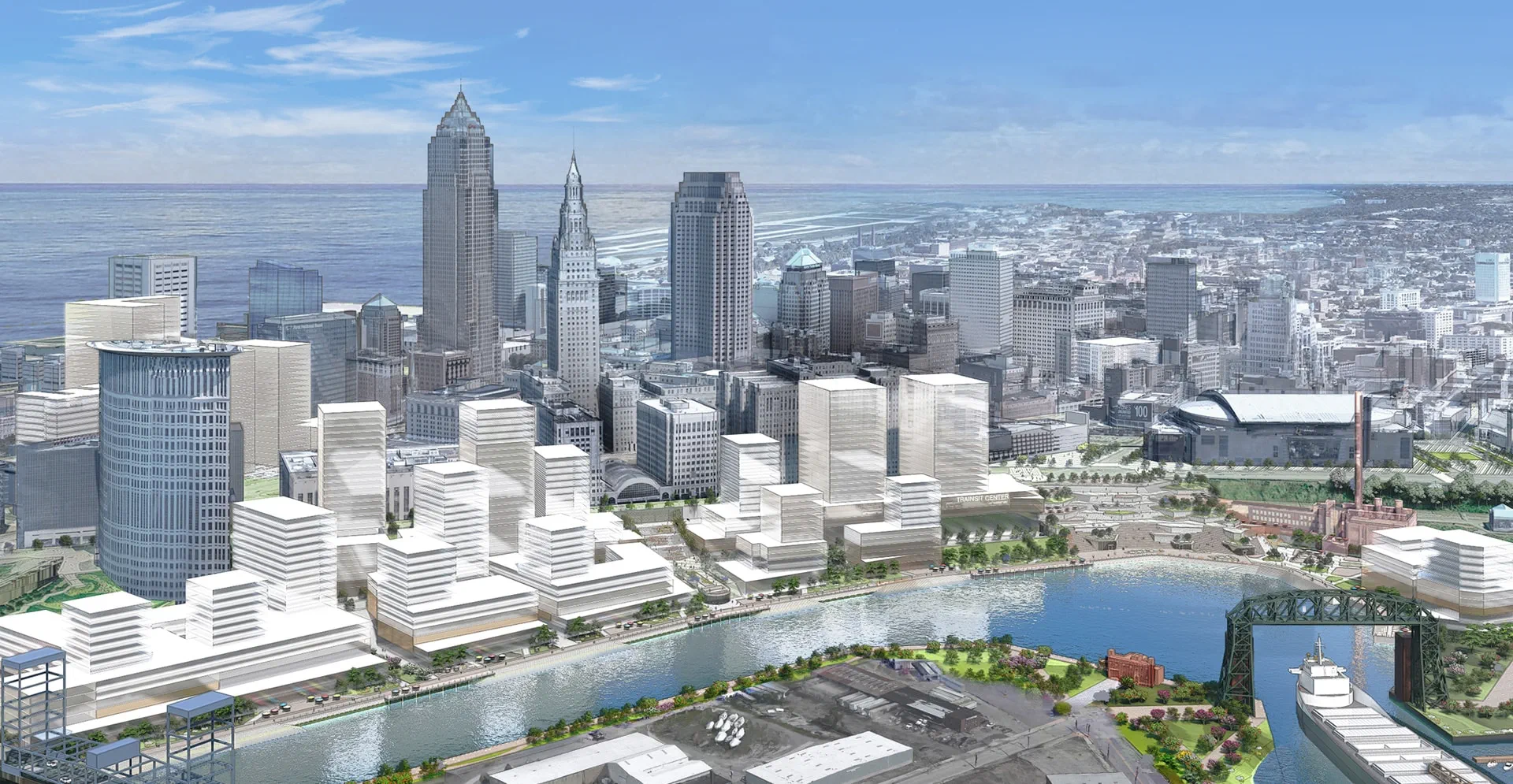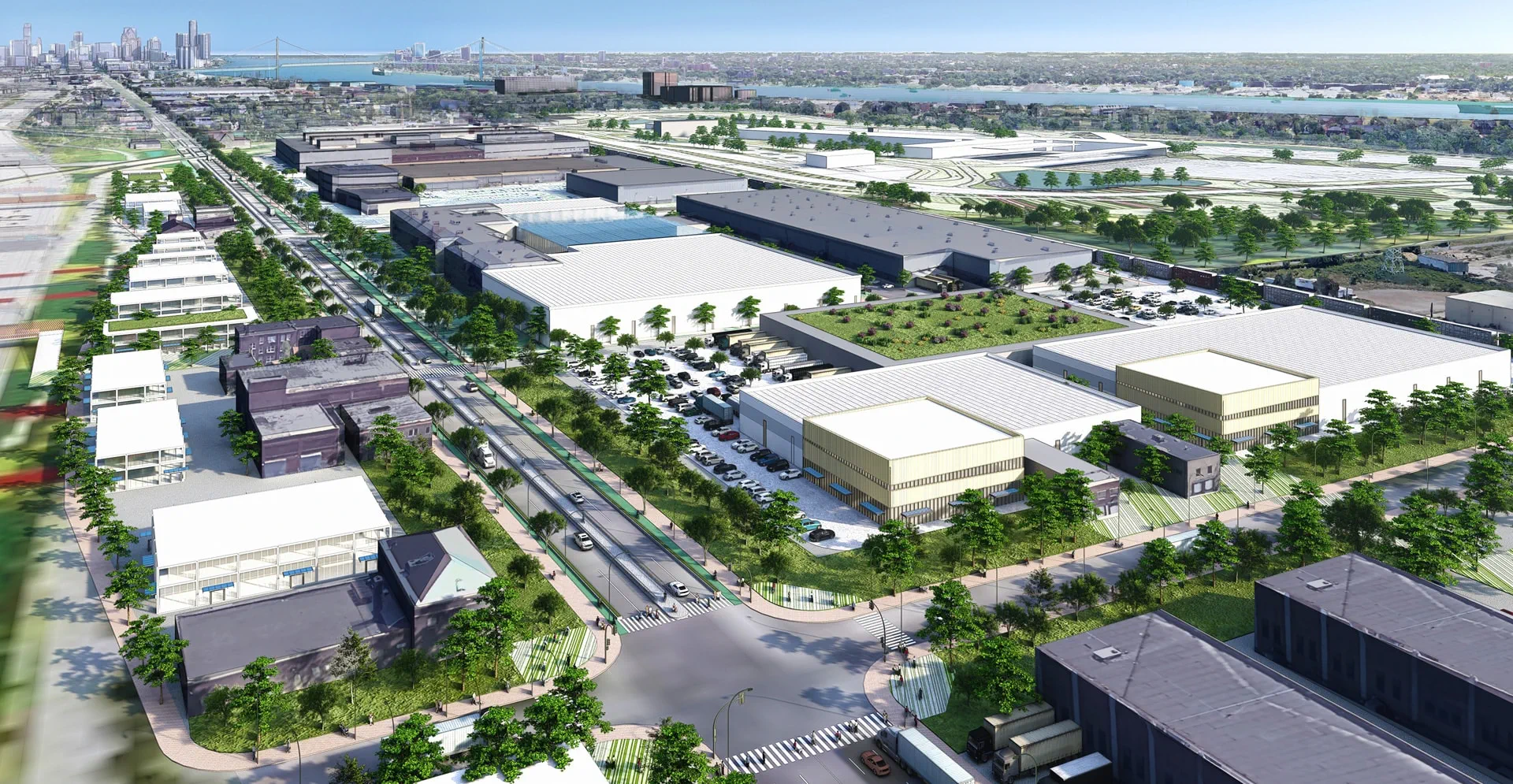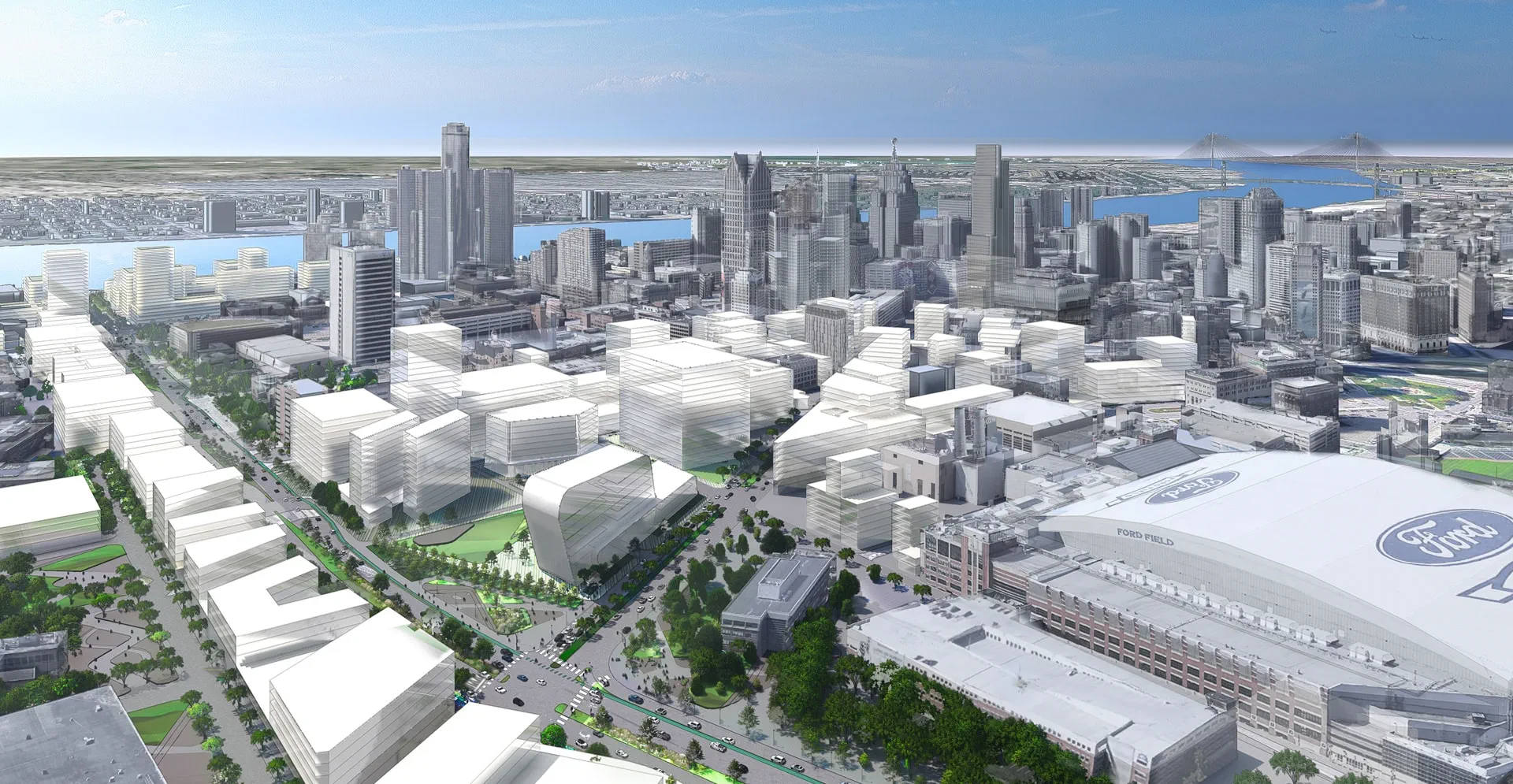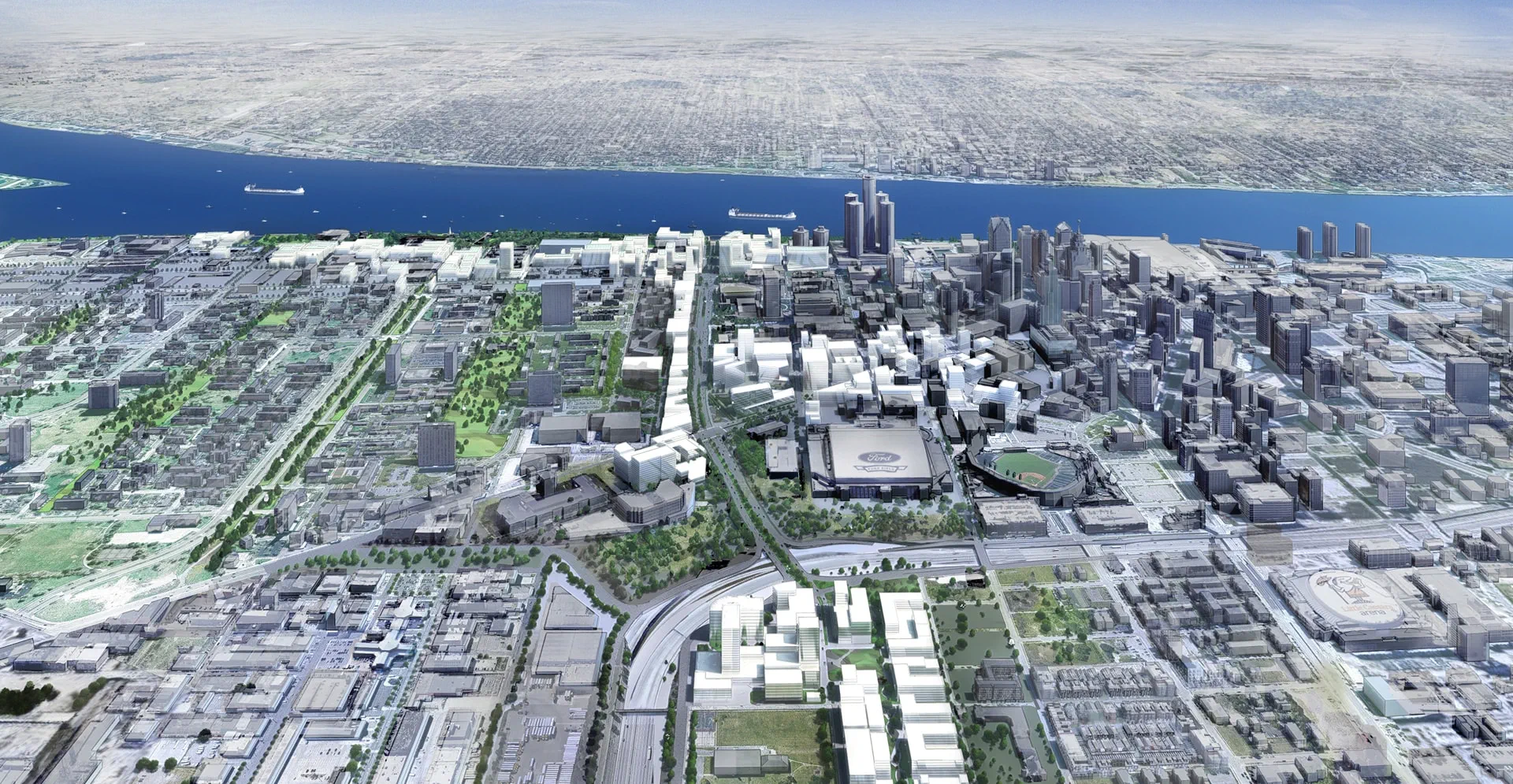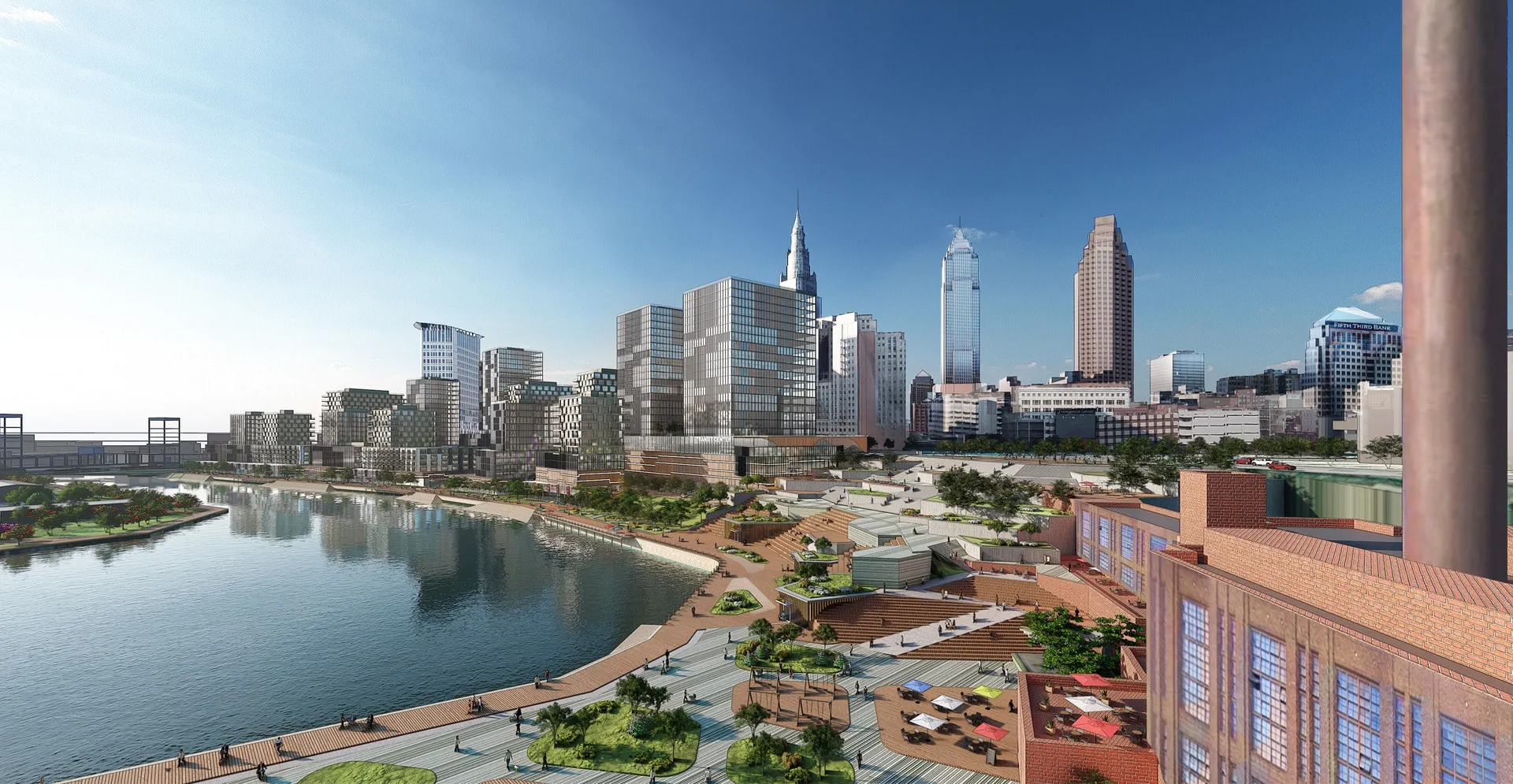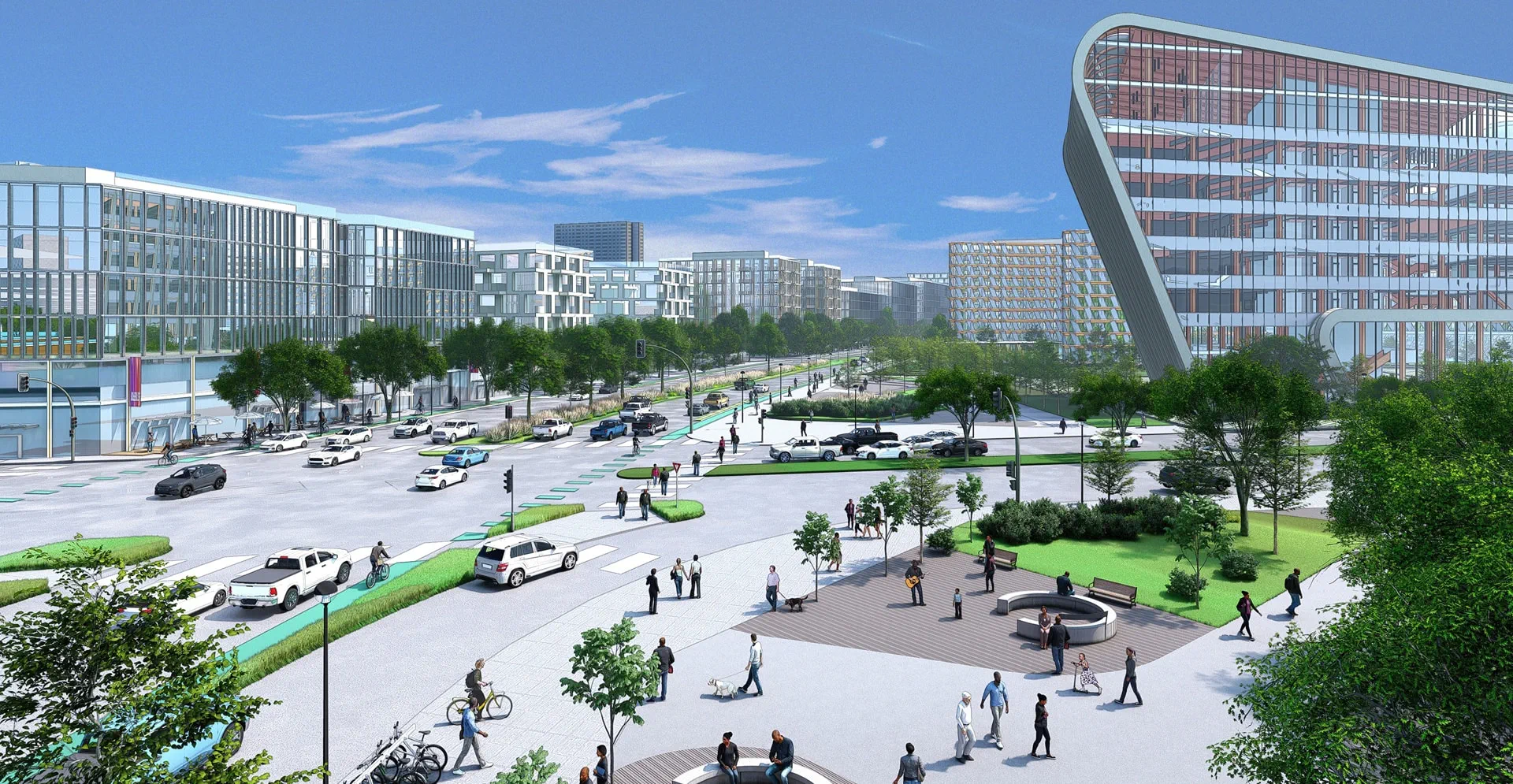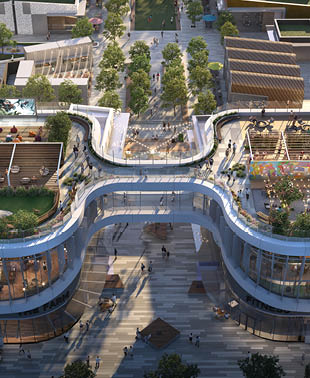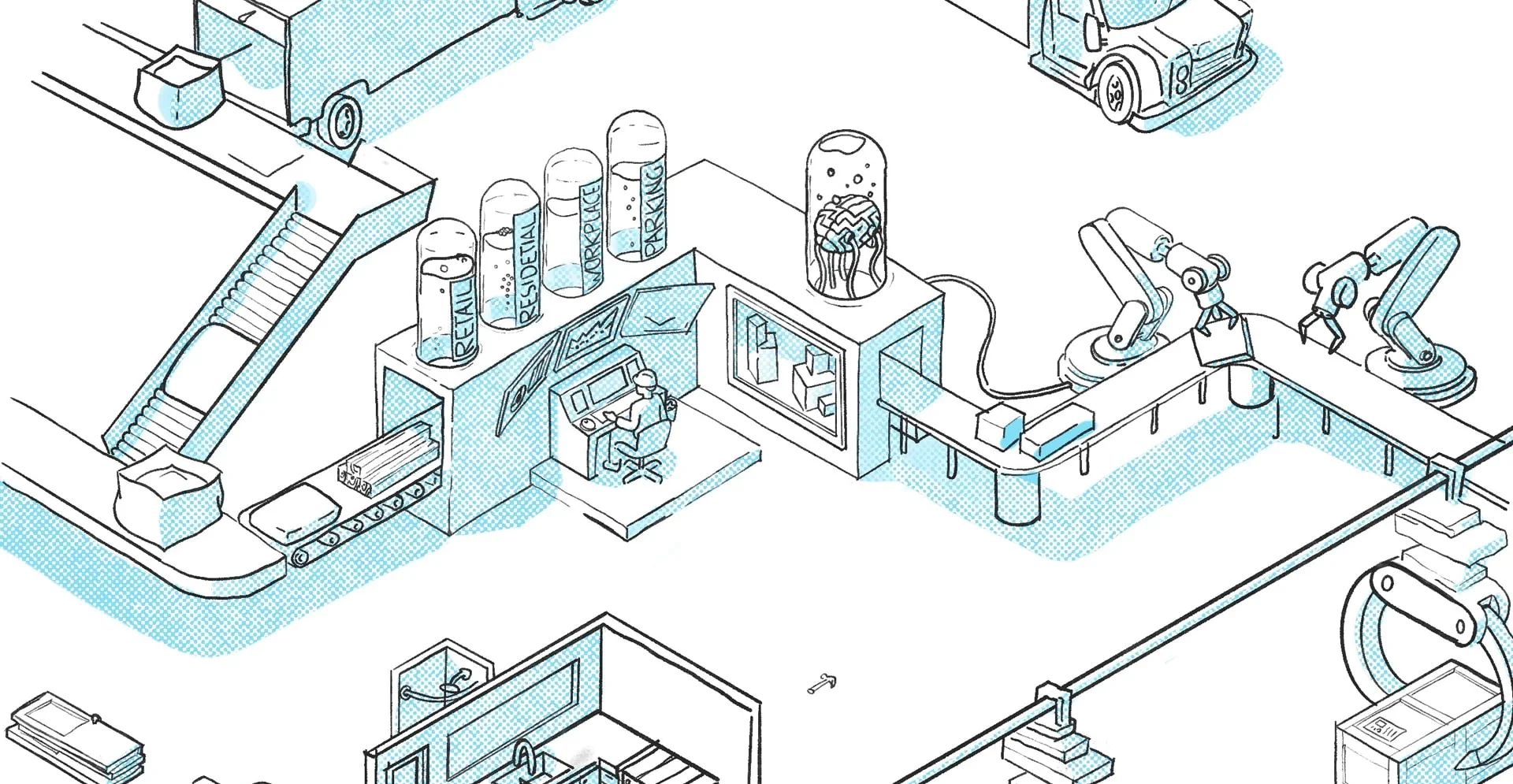Table of Contents
The challenge
Industrial restructuring and racial and social issues have left the urban cores of Cleveland and Detroit under-utilized.
10 million
Historically, downtown Cleveland and Detroit played a role in the industrialization of America throughout the 20th century. Industrial restructuring and changes to the auto industry led to stagnation in the cities’ growth, which has been largely compounded by racial and social tensions. Bedrock Detroit has set a goal to revamp both riverfront districts through redevelopment plans that focus on reinvigorating the economies through mixed-use developments that offer residents a sustainable, transit-oriented place to live.
The solution
We created data-driven urban design plans, leveraging parametric design to optimize our recommendations for accessibility, equity and sustainability.
35+ acres
In both cities, our data-driven development plans are playing a key role in transforming waterfront districts that have been under-utilized for decades. We consulted with local planning firms and quantitative data to produce parametric models that allowed us to test for future social, economic and climate-driven scenarios such as population growth.
With the assistance of computational modeling, we managed to determine the precise mix of mixed-used residential areas, commercial amenities, services and infrastructure needed by any community. Specifically, we assessed many variables, such as the availability and necessity of schools, hospitals, grocery stores, cafes and urban traffic and transit flows, to maintain the 15-minute optimization of each neighborhood.
By layering this information with client and stakeholder engagement, along with community feedback, we managed to create urban models that considered the social and equity-based services that would be required in the new communities. This step was particularly important given the class and racial inequities that have long existed in both Detroit and Cleveland.
In the 1960s, the city authority of Detroit demolished predominantly Black neighborhoods or left them neglected and disconnected from the rest of the city through discriminatory planning policies. A key goal of the redevelopment plan for Detroit is stitching several downtown Detroit neighborhoods back together and demolishing the I-375 Freeway, which bored its way through the Black Bottom neighborhood in the 1960s. After all these efforts, local streets, bike paths, and sidewalk connections will appear, bringing people and communities together.
The impact
Our plans offered Bedrock Detroit a roadmap to reimagining downtown Cleveland and Detroit that exemplified sustainable and inclusive planning.
Ultimately, our design and visioning packages are now being leveraged by Bedrock Detroit to work with community stakeholders and respective municipal governments to bring the vision of resilient, sustainable downtown cores that are economically robust and transit-oriented to life.
Over the next 15 to 20 years, these neighborhoods will take shape and offer dense, walkable, amenity-rich communities where residents can reach everything they need within 15 minutes on foot or by bike.
In particular, in Cleveland, the development plan will support the city’s plans to grow its population by 30,000 by 2030. In Detroit, the city’s redevelopment has the potential to shape an inclusive community that offers equal access to housing and business opportunities for everyone.
Not done reading?
This also might be interesting for you
- Related Projects
- Related Insights
- Related Blogs


